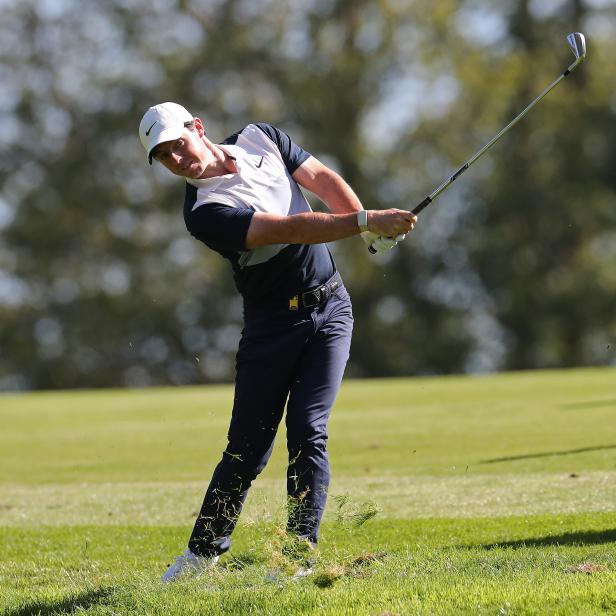We’re accustomed to watching golfers navigating thick rough at major championships, but the grass seems to be especially thick this week at TPC Harding Park. We’ve seen every top player struggle with unpredictable lies at the PGA Championship, making it difficult for them to control their approach shots.
Though the courses most of us play regularly don’t feature rough this thick (thank goodness), these are situations every golfer must deal with. And scoring well and saving your rounds can often come down to navigating some gnarly rough.
We spoke with top state instructors Jason Guss and Ashley Moss, who shared three keys tour players use to improve their contact from the rough, and how they can help you. Try them out the next time you find yourself in a thick second cut.
How your lie should dictate your decision
First thing’s first, you have to read the lie of your ball. If you pay attention, you’ll see that all of the pros read their lies when they land in the rough. However, Moss sees very few amateurs look at how their ball is resting when they miss the fairway. Instead of rushing to hit the shot, Moss says to take a minute to analyze how the lie will affect your shot: how much grass is directly behind your ball and whether you’ll be able to make clean contact. This video Ian Poulter posted is a great example of this process and highlights how different lies can affect the outcome of your shot.
After a quick look, you see that the first shot is down-grain and sitting up. Moss explains that the club will slide through the rough more easily with this lie. Whereas, the second ball is buried deeper in the rough and will be more difficult to get out. Less than a foot between the two lies, and the outcomes couldn’t be more different. This is why reading your lies is so important.
How to adjust your strategy
Not every lie is one you should choose to try to advance to the green, even for pros. Even the best golfers on tour have to take their medicine from time to time and chip out. When is the right time to grab a higher lofted club and punch out? If your ball is at the bottom of the rough, or the grass behind your ball is so dense, your clubface will probably twist shut through impact, that’s a good rule of thumb for taking a wedge to gouge it out, Guss says.
When chipping out, Guss says to keep two things in mind: distance control and positioning. Be aware of how wide the fairway is and where your best angle into the green will be. Don’t chip it out just to end back up in the rough.
The swing and setup adjustments you need to make
On top of reading your lie, it’s important to set up to the ball properly. Guss suggests playing the ball a little back, nothing forward of center, and keeping more weight in your front foot, about 60-40. These adjustments will promote ball-first contact and create a steeper attack angle that will help you “pop” the ball out of the rough. “This also might be the only shot where a tighter grip can come in handy,” Guss says. Firming up your grip pressure can help you control the club and keep it from turning through impact, especially when the ball is farther down in some dense rough.
Moss added that you should set the face slightly open at address. Cheating the face keeps the grass from grabbing the leading edge and helps maintain your loft through impact, she explained. She also says to consider swapping out your long iron for a hybrid. “These clubs are designed specifically to be used from the rough.” Moss said, “Their bigger sole allows them to cut through thick grass more easily.”


